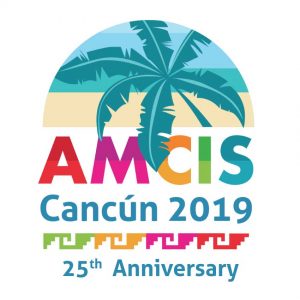Abstract
There is growing evidence that mHealth interventions are effective in LMICs; yet, rigorous experimental and quasi-experimental mHealth studies are limited in these regions (Hall et al, 2014). Notably, mobile phone penetration rates are high in some low and middle income countries (LMICs), e.g. Jamaica. A systematic review on gamification in smartphone health apps indicates that further research is required to assess behavior change techniques and evaluate clinical outcomes (Edwards et al, 2016). Moreover, decision makers need access to successful population health informatics (PopHI) case studies (Kharrazi et al, 2017). The two-fold aim of this study is to determine the level of interest in a “mHealth and Amateur Sports Gamification” intervention at university campuses and to determine the effectiveness of mHealth on health behavior change (physical activity level, dietary habits, and appointment adherence) and health related quality of life (HRQOL). A mixed methods study will be conducted in two phases using the unified theory of acceptance and use of technology (UTAUT) model as the theoretical framework. Phase I has multiple methods: qualitative (to inform the design of a mHealth artifact) and quantitative (to measure intention to use mHealth and Sports Gamification). Phase I will include focus groups of university students and staff to determine to record innovative ideas about improving campus sports, campus food quality, and computer-based interventions as part of a proposed health initiative that will include hardware [wearables, smart phones], software [social media, short message service and/or email], and training equipment. In Phase I, 100 staff and 100 students will be asked to complete a survey about technology acceptance of mHealth and Sports Gamification; a subset will be asked to give feedback about a prototype via a mobile device, including older adults (to address digital participation disparities). Phase II involves an experimental study to determine the impact of health promotion (mHealth vs. conventional health education) on health behavior and HRQOL. The mHealth intervention uses a cross over design, which will begin after a campus sporting event (with health promotion activities). A random stratified sample of 80 participants (40 staff and 40 students) will be issued a fitness tracker for 6 months, free health checks at 6 month intervals, and incentives to reduce attrition. The experimental arm will be exposed to a closed social media group that promotes online community engagement with gamification elements while the control arm will be exposed to conventional health education (pamphlets and seminars with health professionals). After 3 months, there will be a crossover between the experimental group and the control group. Content analysis and multiple regression analysis will be performed on the qualitative and quantitative data respectively. This case study may have significance since the mHealth behavior change model and artifact could be utilized or adapted in other PopHI contexts.
Recommended Citation
Muir, Susan, "To what extent is mHealth an effective Intervention in LMICs?" (2019). AMCIS 2019 Proceedings. 76.
https://aisel.aisnet.org/amcis2019/treo/treos/76
To what extent is mHealth an effective Intervention in LMICs?
There is growing evidence that mHealth interventions are effective in LMICs; yet, rigorous experimental and quasi-experimental mHealth studies are limited in these regions (Hall et al, 2014). Notably, mobile phone penetration rates are high in some low and middle income countries (LMICs), e.g. Jamaica. A systematic review on gamification in smartphone health apps indicates that further research is required to assess behavior change techniques and evaluate clinical outcomes (Edwards et al, 2016). Moreover, decision makers need access to successful population health informatics (PopHI) case studies (Kharrazi et al, 2017). The two-fold aim of this study is to determine the level of interest in a “mHealth and Amateur Sports Gamification” intervention at university campuses and to determine the effectiveness of mHealth on health behavior change (physical activity level, dietary habits, and appointment adherence) and health related quality of life (HRQOL). A mixed methods study will be conducted in two phases using the unified theory of acceptance and use of technology (UTAUT) model as the theoretical framework. Phase I has multiple methods: qualitative (to inform the design of a mHealth artifact) and quantitative (to measure intention to use mHealth and Sports Gamification). Phase I will include focus groups of university students and staff to determine to record innovative ideas about improving campus sports, campus food quality, and computer-based interventions as part of a proposed health initiative that will include hardware [wearables, smart phones], software [social media, short message service and/or email], and training equipment. In Phase I, 100 staff and 100 students will be asked to complete a survey about technology acceptance of mHealth and Sports Gamification; a subset will be asked to give feedback about a prototype via a mobile device, including older adults (to address digital participation disparities). Phase II involves an experimental study to determine the impact of health promotion (mHealth vs. conventional health education) on health behavior and HRQOL. The mHealth intervention uses a cross over design, which will begin after a campus sporting event (with health promotion activities). A random stratified sample of 80 participants (40 staff and 40 students) will be issued a fitness tracker for 6 months, free health checks at 6 month intervals, and incentives to reduce attrition. The experimental arm will be exposed to a closed social media group that promotes online community engagement with gamification elements while the control arm will be exposed to conventional health education (pamphlets and seminars with health professionals). After 3 months, there will be a crossover between the experimental group and the control group. Content analysis and multiple regression analysis will be performed on the qualitative and quantitative data respectively. This case study may have significance since the mHealth behavior change model and artifact could be utilized or adapted in other PopHI contexts.


